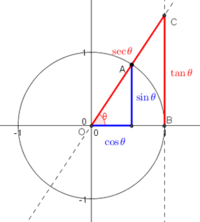Good morning/evening everyone.
I'm going through a book riddled with mistakes and that causes me to doubt my math skills first, then the book and then the whole discipline of mathematics, and im dad, so you can imagine what it does to leaving cert teenage daughter.
This particular exercise already cost me almost a full day, so please help.
Exercise goes as follows:
Prove that:
cos(45degrees + theta) -(cos45degrees - theta) = -squarerootof2sintheta
I tried the same thing a few times and i consulted various sources on and offline so finally I came to the decision that they have made a mistake, and the exercise should have, instead, been:
Prove that:
cos(45degrees + theta) - cos(45degrees - theta) = -squarerootof2sintheta
Am I wrong in making that assumption and is there a way where the original exercise is right?
I'm going through a book riddled with mistakes and that causes me to doubt my math skills first, then the book and then the whole discipline of mathematics, and im dad, so you can imagine what it does to leaving cert teenage daughter.
This particular exercise already cost me almost a full day, so please help.
Exercise goes as follows:
Prove that:
cos(45degrees + theta) -(cos45degrees - theta) = -squarerootof2sintheta
I tried the same thing a few times and i consulted various sources on and offline so finally I came to the decision that they have made a mistake, and the exercise should have, instead, been:
Prove that:
cos(45degrees + theta) - cos(45degrees - theta) = -squarerootof2sintheta
Am I wrong in making that assumption and is there a way where the original exercise is right?

